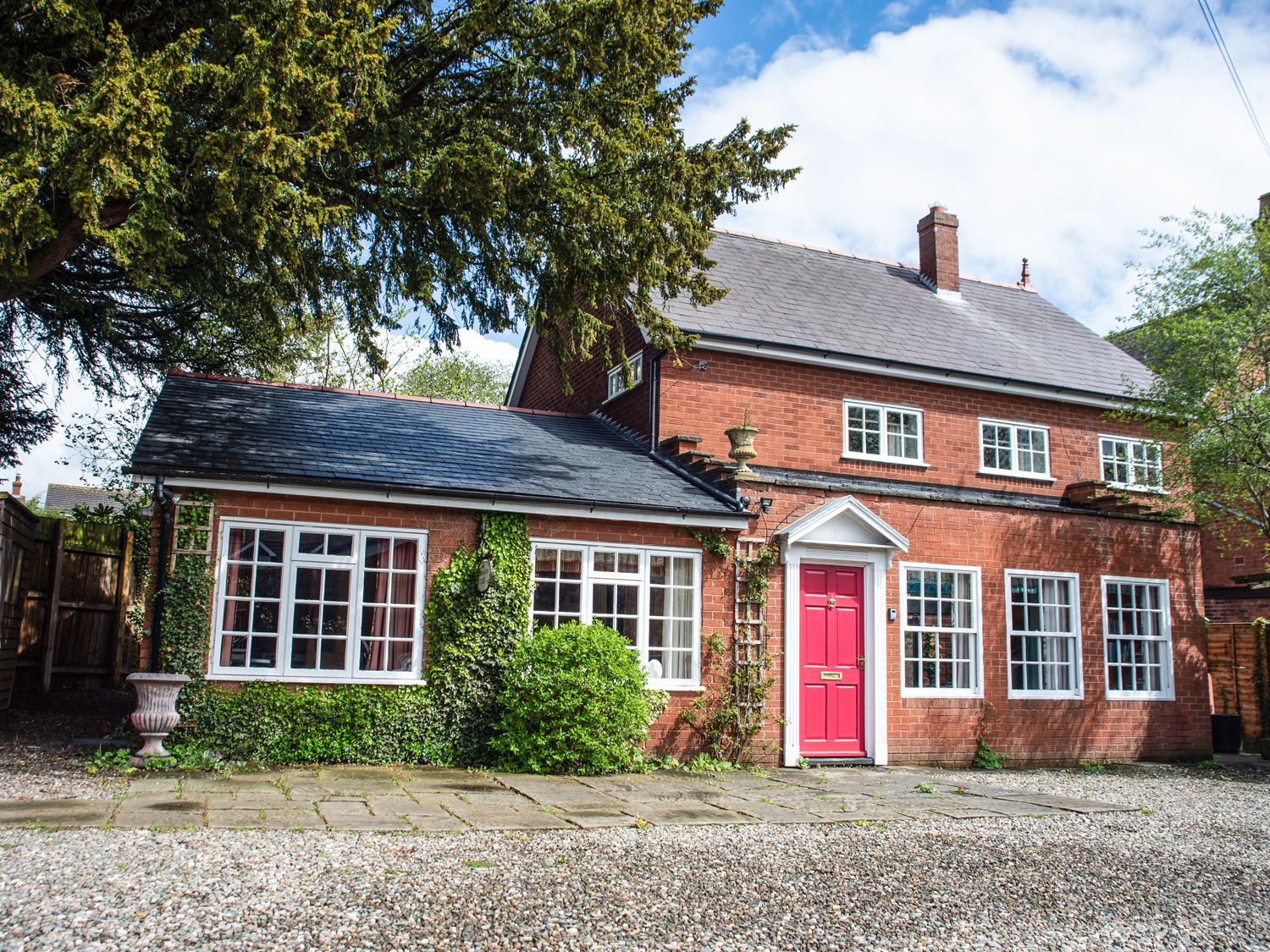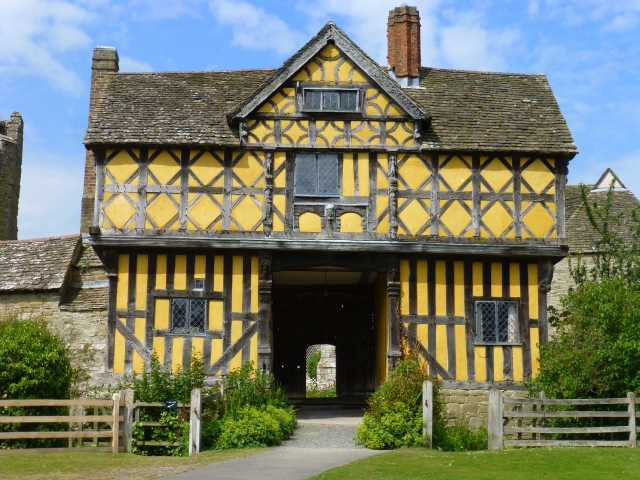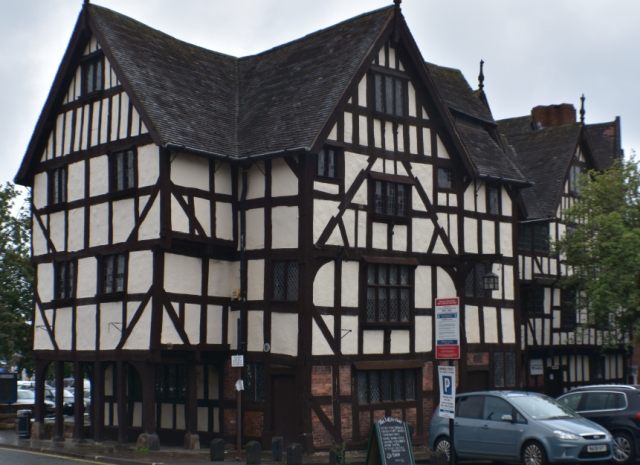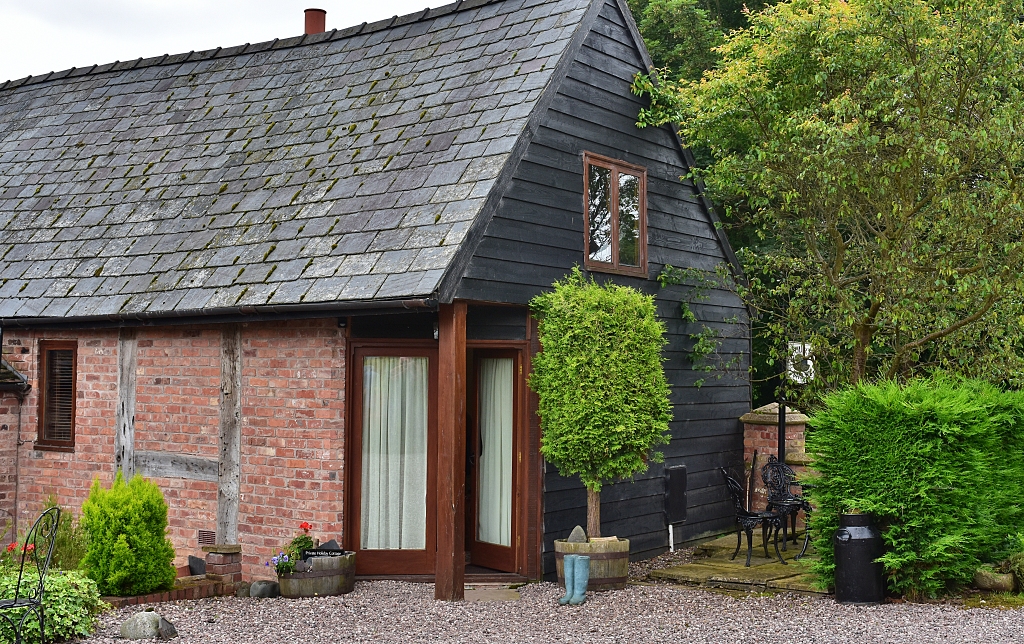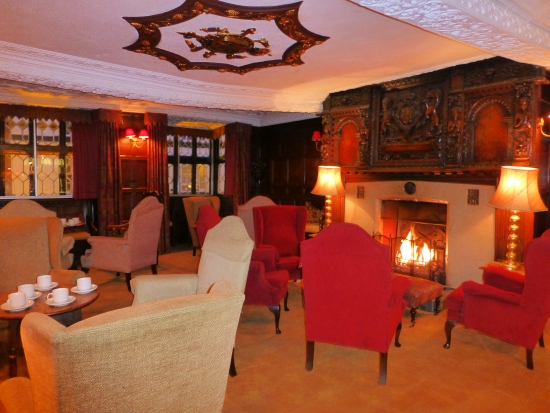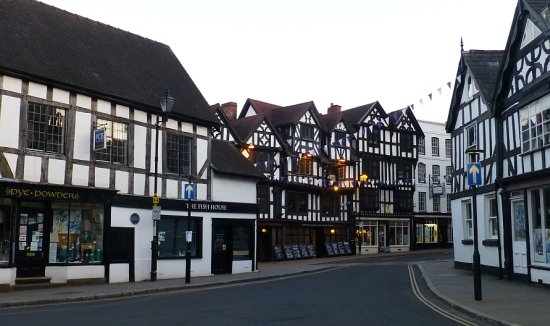The Tar Tunnel
Tucked away behind a small doorway in the town of Coalport in Shropshire is the unique Tar Tunnel.
It is one of the ten museums that make up the Ironbridge Gorge World Heritage Site, and it’s an experience in which you have to don a safety hat and, if you’re tall, duck.
The entrance is like walking into someone’s basement flat, but that’s because when the tunnel was abandoned a house was built over its entrance.
Tar Tunnel History
The creation of this tunnel was the brain child of William Reynolds who planned to construct an underground canal to carry coal from Blists Hill mine out to the River Severn. Work started in 1786, and after 1000 feet, the tunnel builders stumbled upon a spring of bitumen, or tar. Work on the tunnel continued, but it was slow and hard work. After approximately 3000 feet and over a year of digging, William Reynolds decided to forget about the canal and try and make his money by exploiting the tar. Collection points were dug into the tunnel wall and production was around 1000 gallons per week for a number of years.
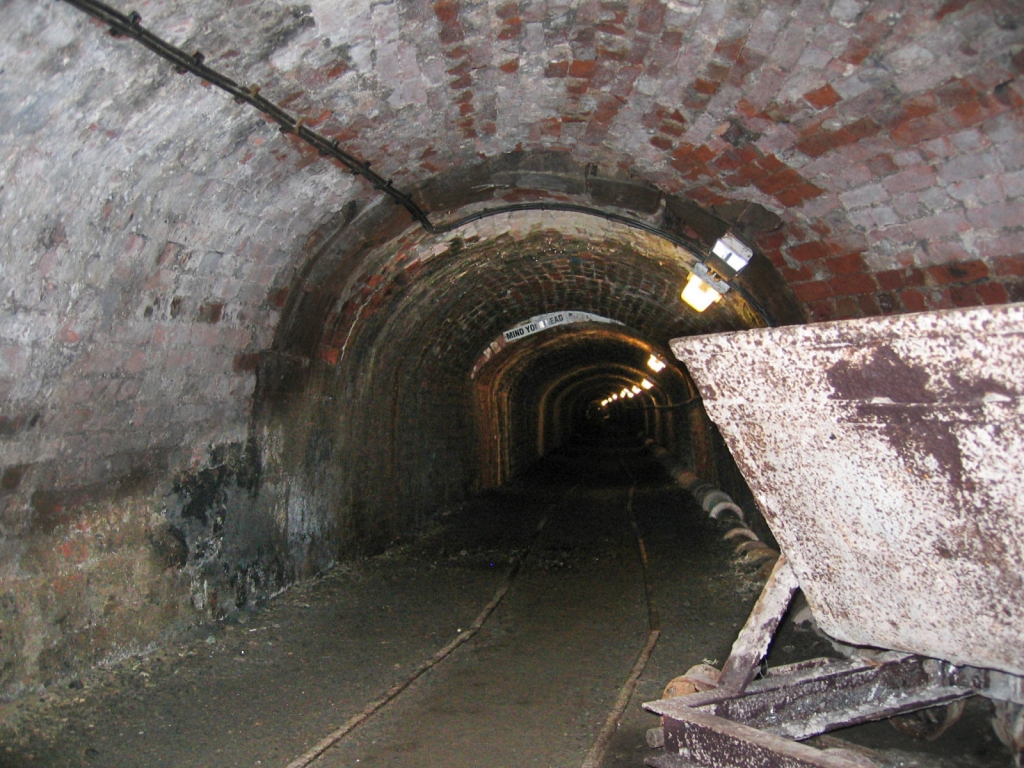 Entrance to the Tar Tunnel © essentially-england.com
Entrance to the Tar Tunnel © essentially-england.com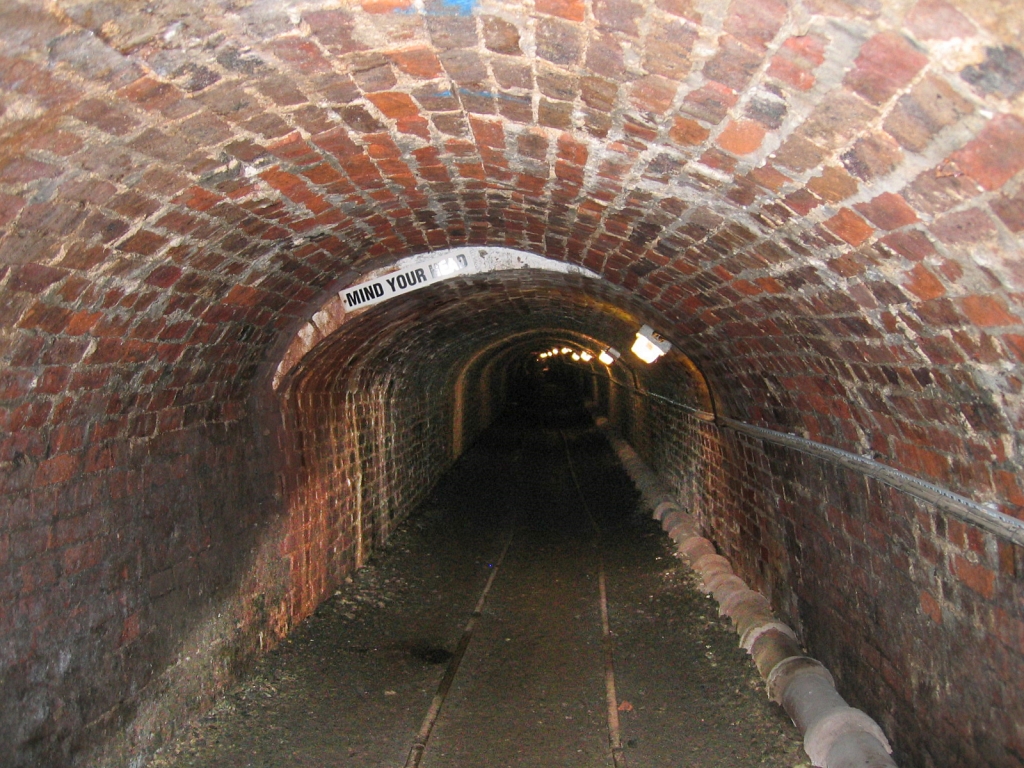 Looking Down the Tunnel © essentially-england.com
Looking Down the Tunnel © essentially-england.comHowever, the tar supply slowed and the markets for tar products dwindled so that by the 1840s collection stopped. At the time the tar would have been used for weather proofing ropes, caulking wooden boats, wood preservation, and small amounts were turned into a rheumatism cure called “British Oil”. The tunnel wasn’t wasted as the mine used it for drainage and ventilation until the 1930’s and during the Second World War it was used as an air raid shelter.
Now you can walk along the first 300 feet of the brick lined tunnel and see the black tar oozing from the walls. Just remember to duck if you’re tall!
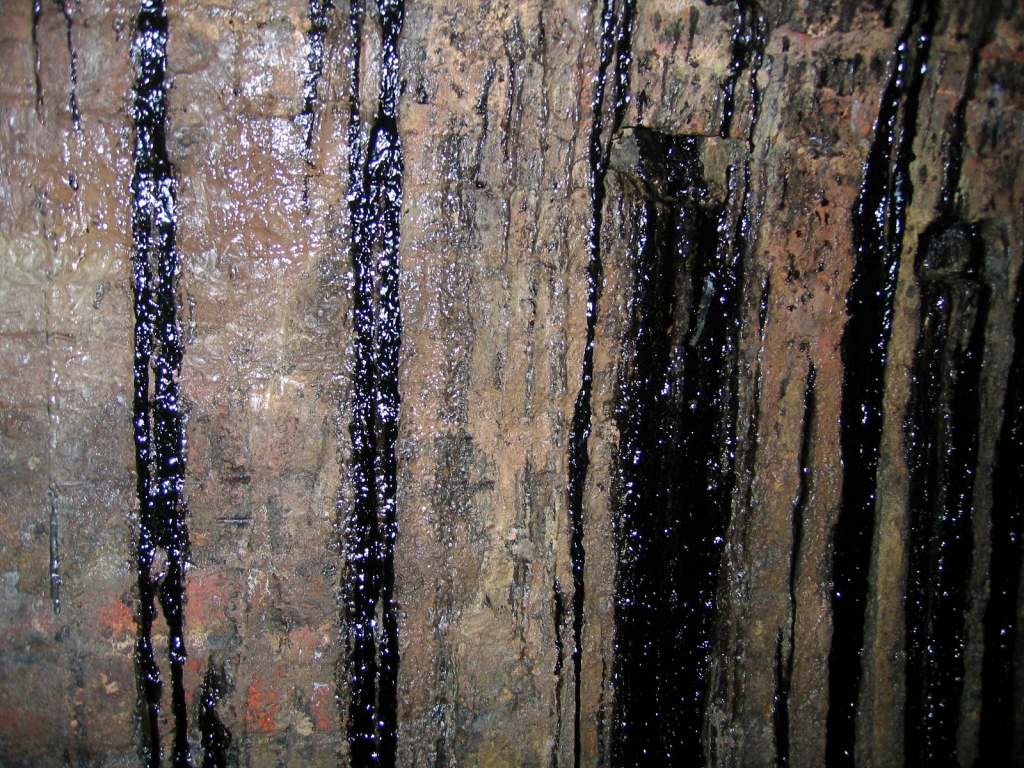 Seeping Tar © essentially-england.com
Seeping Tar © essentially-england.com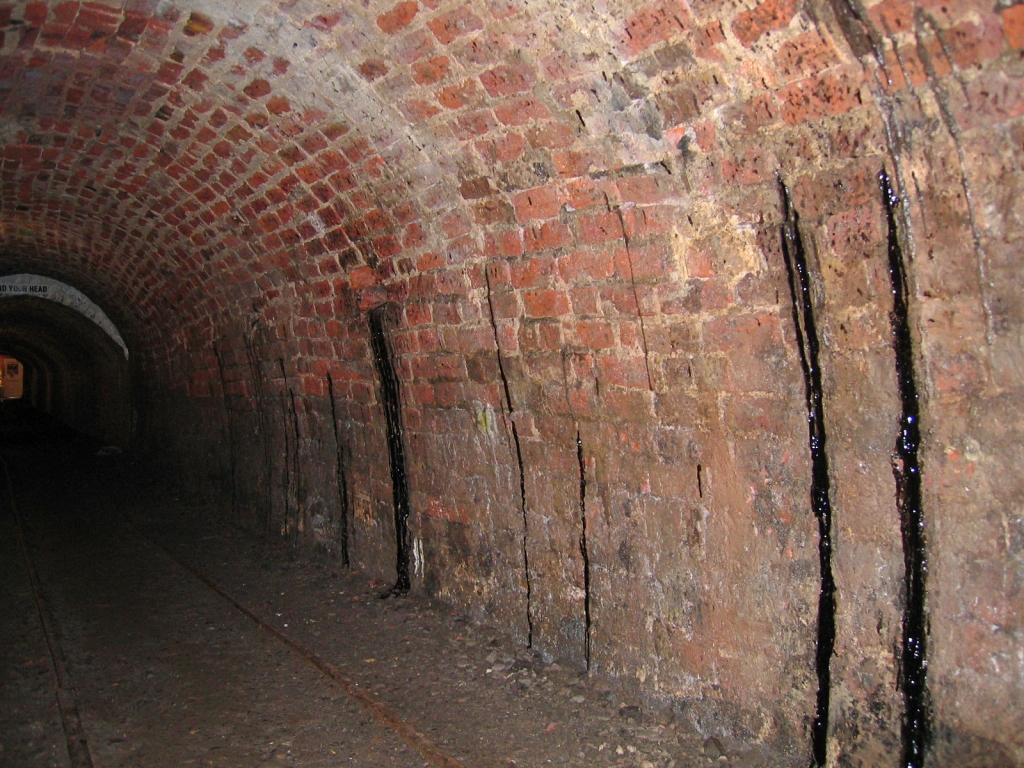 Tears of Tar © essentially-england.com
Tears of Tar © essentially-england.comThe Hay Incline Plane
The failure of the canal tunnel did not stop these ingenious people. In 1792 construction of the rather clever Hay Incline Plane was completed and boat tubs could now be transferred up the steep, 207 foot slope between the Blists Hill industrial area and the Coalport Canal which linked with the River Severn. Boat tubs were box shaped, 20 foot long and could hold 5 tons of material. Once in the canal they would be strapped together in a train and drawn along the canal by horse.
The incline plane consisted of two tracks upon which cradles would run up and down. The loaded boat tub would be floated on to the cradle at the top of the incline and its descent controlled by a steam powered winding drum. As the loaded boat tub descended an empty one would climb on the other track. At the bottom of the incline the cradle would go into the canal so that the boat tub could be floated into position.
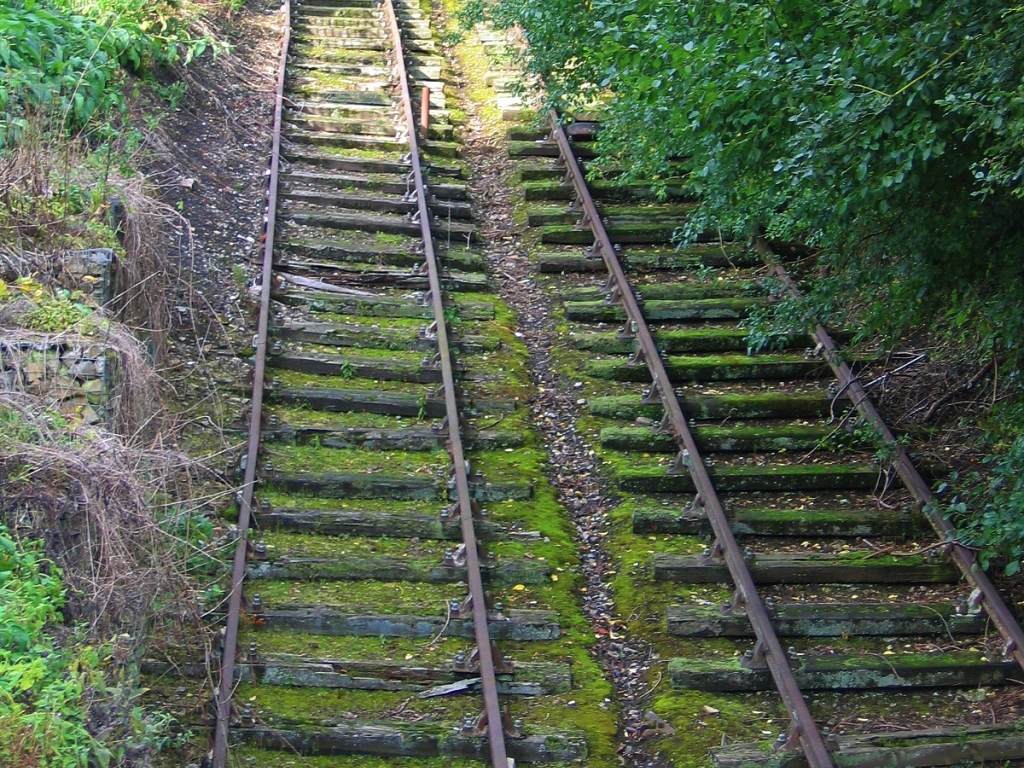 Tracks up The Hay Incline Plane
Tracks up The Hay Incline Plane © essentially-england.com
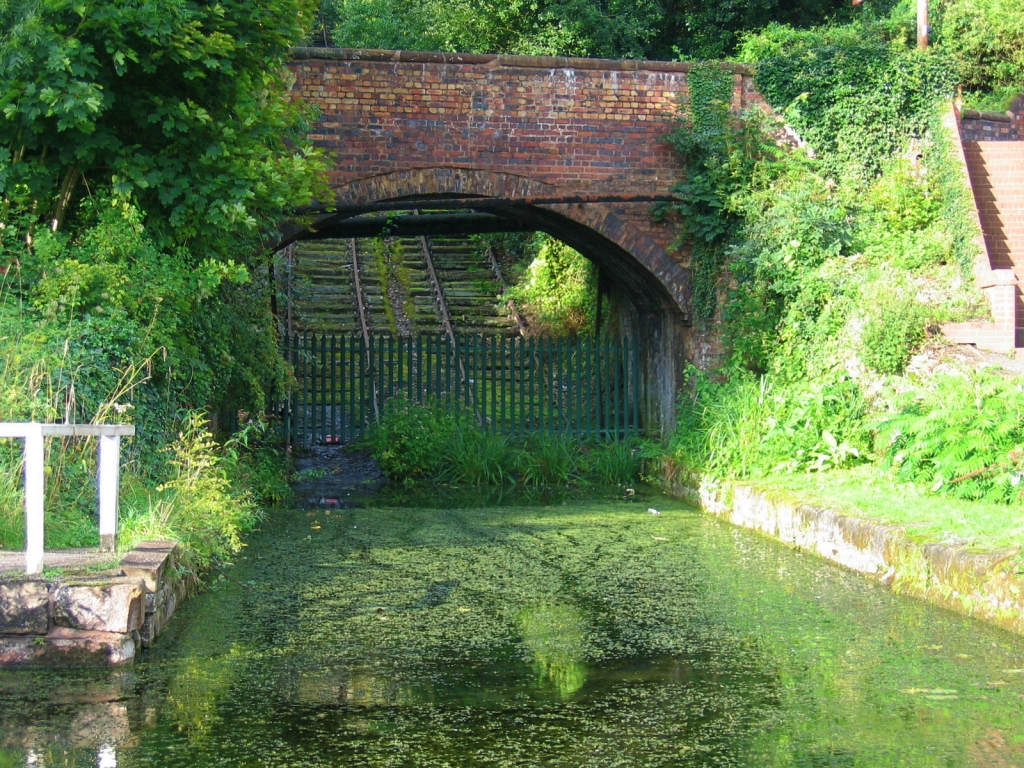 The Hay Incline Plane and Coalport Canal
The Hay Incline Plane and Coalport Canal © essentially-england.com
A short walk along the relaxing Coalport canal is Coalport China Museum, another of the ten Ironbridge Gorge World Heritage Site museums. For more information on the tar tunnel, its opening times and events please visit the Ironbridge museum website.
Are You Planning a Trip to Shropshire?
Shropshire is a marvellous place for history and food lovers! There's so much to see and do and taste, that you'll need more than just a short visit. If food is your thing, head to Ludlow and start exploring from there. For history lovers, Shrewsbury makes a great base with many historical sites in very easy reach.
Where You Could Stay
To see more self-catering cottages in Shropshire click here or check out holiday cottages in other parts of England by clicking here.
If you need to find a hotel, then try one of these search platforms...
More hotel ideas can be found on our Shropshire Hotels page.
What You Could See and Do
Here are a few places that should go on your must-see list:
- Wroxeter Roman City
- Shrewsbury and Shrewsbury Abbey
- Attingham Hall
- Offa's Dyke
- Ironbridge Gorge, Ironbridge & Broseley Jitties
- Coalbrookdale Museum of Iron
- Jackfield Tile Museum and the Tar Tunnel
- Blists Hill Victorian Town - a fantastic living museum
- Ludlow Castle
- Stokesay Castle
Click here for a great list of things to do in Shropshire.
If you would like to know more about the Ironbridge Gorge World Heritage Site then please click here, or for more information on Shrophire and ideas for days out click here.

